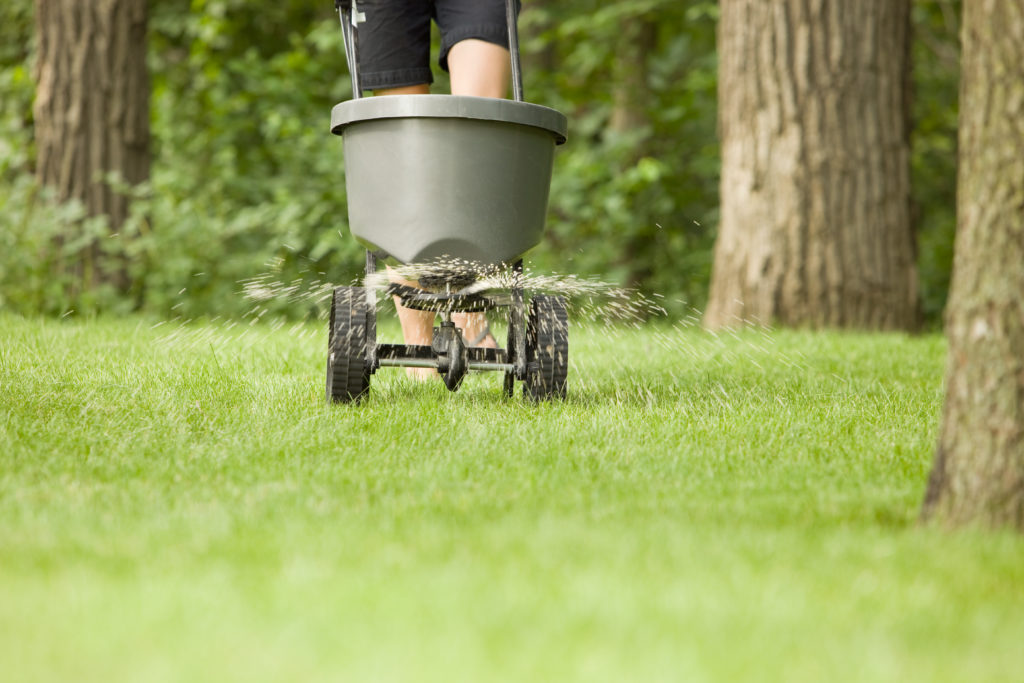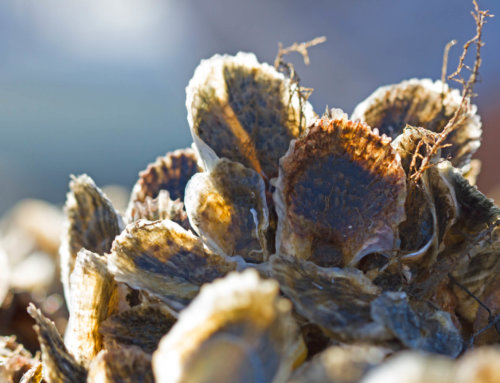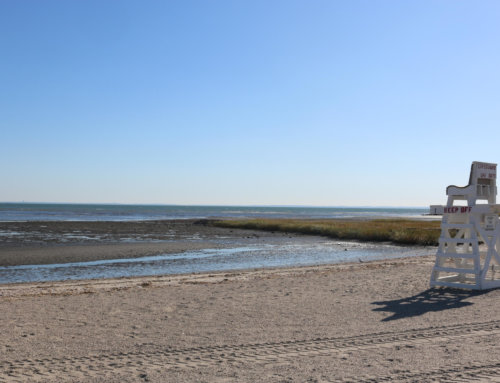A Must Read Before You Fertilize Your Lawn This Season
March 27, 2019 | By: Christianne Marguerite
Do you want to maintain a healthy, green lawn while saving money on fertilizer applications? With fertilizer season upon us, we talk about how nutrient pollution harms both your lawn and Long Island Sound. We also debunk 3 common myths about fertilizing and provide 5 easy tips for better lawn care practices.
Although it may not feel like it quite yet, spring is here and will soon be in full effect. You know what that means… ‘Tis the season for many things like going on spring hikes with the kids, not having an excuse to not take your dog to the park, pulling out the fishing gear, catching a cold, remembering you can’t wear flip flops to work, planning your summer family trips to the beach, and of course applying copious amounts of fertilizer to your lawn in hopes that your grass will be greener than that of your neighbor. You rush to be first one in your neighborhood with a bright green lawn, ensuring that the grass is freshly mowed before each BBQ you are hosting this year and anticipating how long your lawn will stay green as the months go on, all while adding more fertilizer the second it starts to fade. You may even secretly have your lawn care company on speed dial at this point. Maintaining the “picture perfect” lawn is like a game. Plus, with climate change shifting seasonal patterns and causing erratic weather, the first spring flowers, such as crocuses and daffodils, are blooming earlier. You may feel the need to start fertilizing early once you witness these flowers pushing through the melting snow. Before you get out those gardening gloves, though, we hope you will consider making this an extra-green spring by caring for your lawn with the environment in mind.
Applying fertilizer before May is too early because your lawn needs time to digest the nutrients you gave it last fall. In fact, adding too much nitrogen and phosphorus to your lawn can cause more harm than good. “Applying excess organic or commercial fertilizer to turfgrass can cause reduced soil quality and an increase in plant diseases” says Tom Morris, professor of plant science at the University of Connecticut. “The nutrients plants don’t use are lost from the soil, eventually polluting coastal waters, lakes and ponds. Many people are surprised to learn that heavy applications of compost can lead to phosphorus levels that inhibit plant growth and reduce diversity of healthy microorganisms in soil.” If you fertilize your lawn, the best time to apply in southern New England is around Memorial Day in May or around Labor Day in September. According to Professor Morris, spring and fall are when “the soil supply of nitrogen is typically diminished.” Cutting applications to two times per year will save you money, keep your lawn happy, and keep our environment healthy – it’s a win-win for all.
Nitrogen from lawn fertilizers is one of the leading causes of pollution in Long Island Sound. When nitrogen pollution enters our streams, bays and harbors it can trigger algae blooms which decrease water clarity, reduce oxygen in the water and threaten marine life. Since applying lawn fertilizer has such a significant impact on coastal waters and our quality of life, it is crucial to learn about changes we can make.
With the help of Professor Morris, we debunked 3 common myths about lawn fertilizer:
- MYTH– The higher the nitrogen content, the more nutrients for the plants and the healthier they will be.
- FACT– Nitrogen is a necessary nutrient for all of life but too much of it can dehydrate plants and stunt the growth of roots.
- MYTH– If I use an organic fertilizer with less nitrogen, then I can apply it more frequently throughout the year.
- FACT– Organic fertilizers, including compost, are an excellent source of slow-release nutrients. However, the rates often recommended for compost can result in excessive phosphorous in soils and pollute nearby waters. It is important to remember that less is better, even with organic fertilizer.
- MYTH– I shouldn’t ask my lawn care service to change the way they fertilize my lawn because they are the experts.
- FACT– Obtaining a second opinion about the practices used on your lawn by your current lawn care service provider is always a good idea, just like it is a good idea to obtain a second opinion or quote for all services. Don’t be afraid to request changes.
Now that we’ve debunked those myths, it’s time to change the way we fertilize. Our friends at Clean Up Sound and Harbors (CUSH) talk about Sound-Friendly Yards and they say it well: “…there is only one definition of a healthy lawn, and that is one that is green in both color and character. A healthy lawn thrives in harmony with its surrounding environment…” Let’s encourage our friends and neighbors to fight for cleaner, healthier waters for generations to come. Together, we can create positive change, starting with halting, or at least reducing, our use of harmful fertilizers.
The Nature Conservancy in Connecticut recommends some practices for cleaner water. Here are 5 easy tips to keep both your lawn and our environment healthy:
- Mow high and leave grass clippings on your lawn. Set your mower to cut the grass about 3-4 inches high and leave clippings where they are. This keeps roots strong, slowly releases nitrogen into the soil for a lush lawn and reduces the need for fertilizer.
- Try using no fertilizer. We found that about 40% of homeowners in Connecticut don’t use fertilizer on their lawns at all. If you use fertilizer, try cutting the amount you apply in half. If you like the way your lawn looks, make that your new amount or add a bit more until you’re happy. You can also pick grasses and plants that require less water and nutrients to survive.
- Apply at the right time, around Memorial Day and/or Labor Day. Only use fertilizer when your lawn needs it. Most lawns don’t require more than two fertilizer applications per year. When in doubt, soil test. Also avoid applying before heavy rains to keep nutrients out of waterways and the Sound.
- Check the bag label or ask your lawn care provider. All it takes is a bag check or a quick internet search to learn the details of your fertilizer. Oftentimes, people may not know what is being applied to the lawn because a landlord or lawn care company takes care of it. We suggest learning how often and how much fertilizer is applied to your lawn. Try slow release formulas with less nitrogen and avoid combination products with pesticides and herbicides. They are healthier for children, pets and our water.
- Choose plants that reduce runoff. Instead of only grasses, add a variety of flowers, shrubs, and trees to your lawn. The roots will keep your soil intact, absorb nutrients, slow down runoff and buffer pollution near bodies of water, like Long Island Sound. Learn more about managing your lawn here.
What changes will you and your neighbors make this season? Let us know in the comments below.




Leave A Comment
You must be logged in to post a comment.